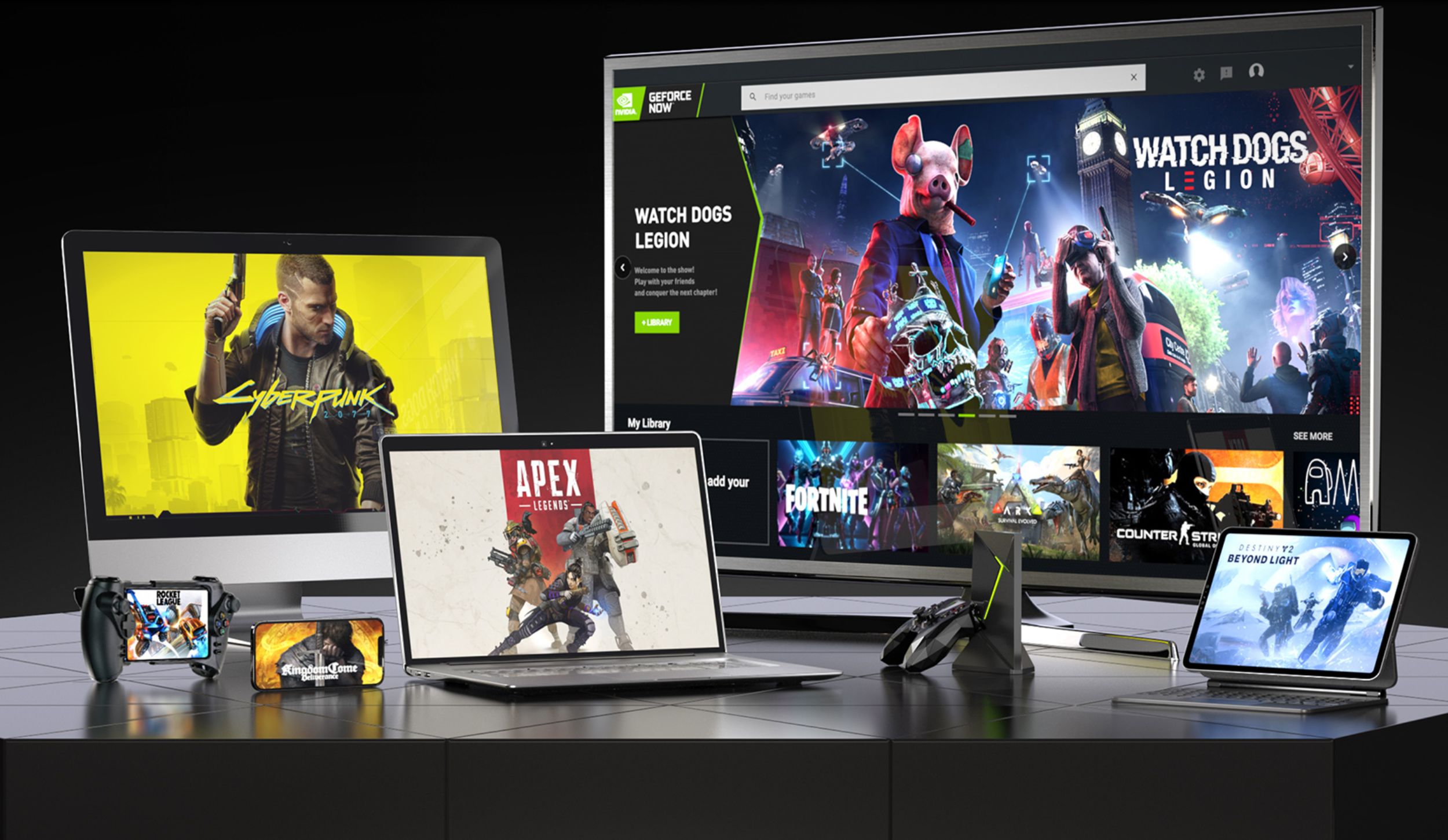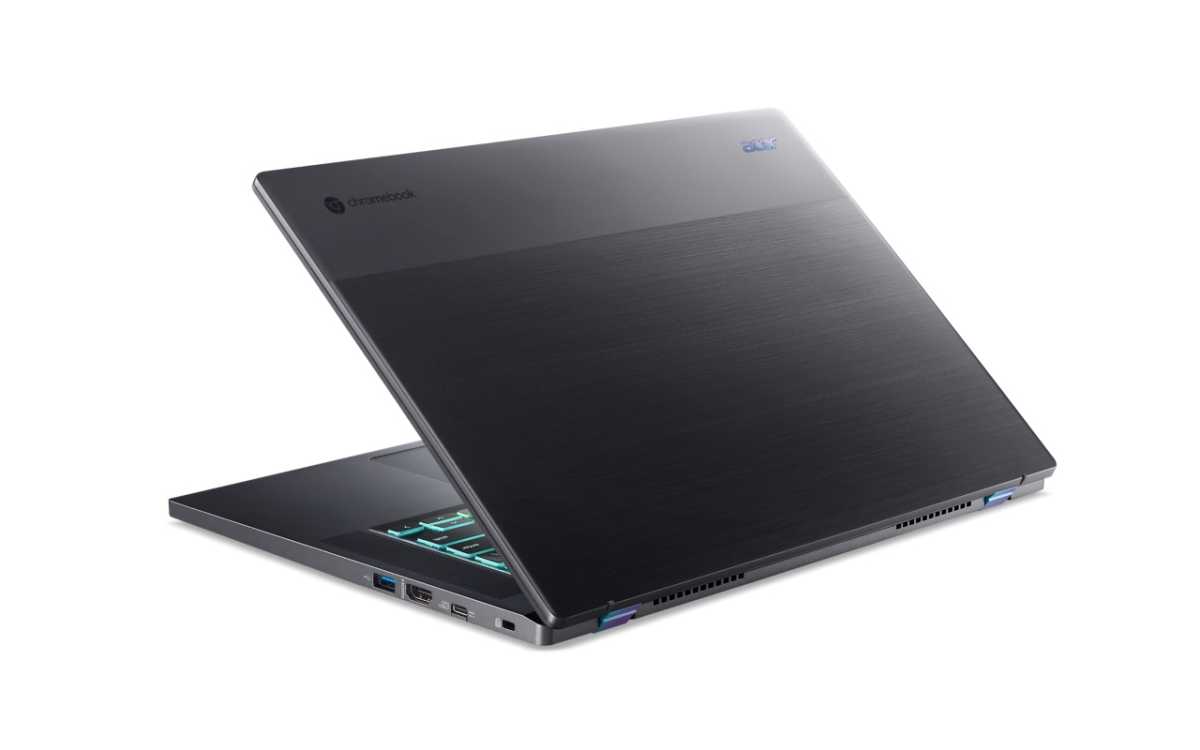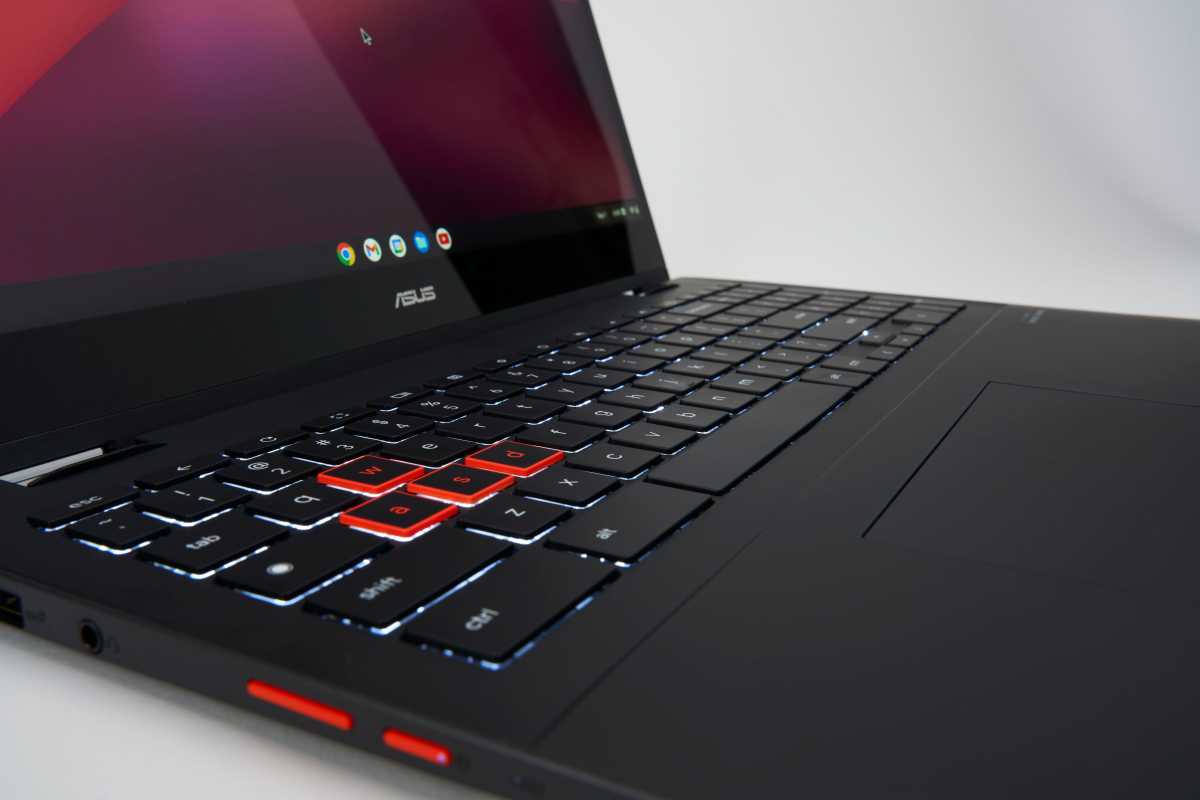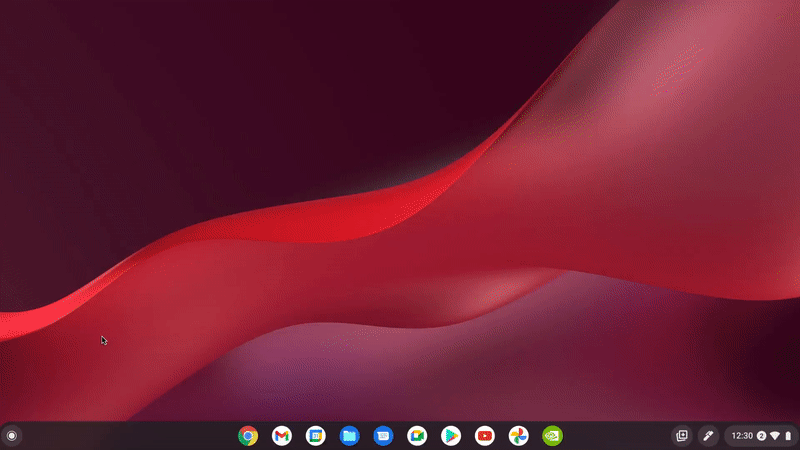
 Image: Asus
Image: Asus
Google is challenging the notion that you can’t game on a Chromebook with…cloud gaming Chromebooks.
We’ve known how to game on a Chromebook for months now, and Google and its partners (Acer, Asus, and Lenovo) have adopted the same approach for Chromebooks: adopt cloud gaming from major providers like Microsoft’s Xbox cloud gaming service, Amazon’s Luna, and the GeForce Now service from Nvidia.
What Google is doing, though, is taking modern gaming-class hardware — Core i7 chips from Intel, plus 144Hz+ 1440p displays — and combining them together in premium cloud gaming Chromebooks. On a PC, this approach might cost well over $1,000. In a Chromebook, Google executives say they’re targeting $700 or so as the maximum — in part because they can exclude a pricy GPU and let the cloud do all the work.
the best cloud streaming service overall
GeForce Now

 Read our reviewPrice When Reviewed:Free tier I Priority tier ($9.99/mo or $49.99/6 mo) I Ultimate tier ($19.99/mo or $99.99/6 mo)Best Prices Today:9.99 at Nvidia
Read our reviewPrice When Reviewed:Free tier I Priority tier ($9.99/mo or $49.99/6 mo) I Ultimate tier ($19.99/mo or $99.99/6 mo)Best Prices Today:9.99 at Nvidia
And, boy, is it. The natural question one would ask is why build in such high-end displays if the games being streamed to them are only 1080p. In Nvidia’s case that won’t be the case: Andrew Fear, director of product management for GeForce Now, said that the service will deliver 1600p game streaming at 120Hz with RTX effects on — and you’ll get three months of this service tier, with an Nvidia RTX 3080 backing it up, for free with purchase of a new gaming Chromebook.
Interestingly, Google directly addressed the key weakness of cloud gaming: latency, or the delay during which your inputs need to travel up to the server and be processed. Google says that its platform has been tested with Gamebench to deliver a smooth experience, with measured frame rates of 120fps and a console-class input latency of under 85 milliseconds. According to Fear, Nvidia tested Destiny 2, Apex Legends and Fortnite on a GeForce Now data center last week with an 8ms ping time and about 60ms of total latency, he said.

Lenovo
Lenovo
Lenovo
Essentially, what Google hopes to offer is a relatively inexpensive Chromebook without the need to manage drivers, OS updates, or game installs — another point of differentiation between a laptop and a Chromebook. “I’m sure many of you hear this: I want a gaming computer, but it’s a lot of time and money,” said John Maletis, vice president of product management for Google’s Chrome OS.
“It’s going to feel like you’re playing on a local device,” Maletis added.
Here are the three new gaming Chromebooks
Google and its partners promise three new gaming Chromebooks: the $649.99 Acer Chromebook 516GE, the Asus Chromebook Vibe CX55 Flip, and the $599 Lenovo IdeaPad Gaming Chromebook.

Acer
Acer
Acer
The Acer Chromebook 516GE’s 16-inch display has a resolution of 2560×1600, a 16:10 aspect ratio, and a game-ready 120Hz refresh rate. Inside is an Intel Core i7-1260P processor. According to Acer, the 65 watt-hour battery can last for up to nine hours. Hopefully, that number holds true in real world use, as Chromebooks are renowned for their battery life. The 1080p webcam is a nice addition as well, especially if you plan on using this device for video conferencing. It will ship in October.
We don’t know the price of the Asus Chromebook Vibe CX55 Flip, though we know that it will ship in October too. The Vibe CX55 Flip includes a 15.6-inch full HD (1080p) display with a 144Hz refresh rate, and a choice between a Core i3-1115G4, a Core i5-1135G7, and a Core i7-1165G7 processor inside, along with an option of 8GB to 16GB of LPDDR4X memory and either 128GB, 256GB, or 512GB of SSD storage along with Wi-Fi 6 (802.11ax) connectivity. Asus says that the Vibe CX55 Flip will ship with orange WASD keys to make it easier for (right-handed) game play; there is a narrow number pad on the right of the keyboard for lefty gamers, too.

Asus
Asus
Asus
Lenovo, meanwhile, says that its $599 IdeaPad Gaming Chromebook will include a 16-inch, 120Hz 2,560×1,600 display generating 350 nits, with the choice of either a Core i3-1215U or a Core i5-1235U inside. Lenovo will ship the Chromebook with a standard 8GB of LPDDR4X memory, and with a choice of 128GB (eMMC) or either 256GB or 512GB of SSD storage. Key travel will be 1.5mm, which is unusually comfortable. The Chromebook will ship with Wi-Fi 6E and a variety of USB-C and USB-A ports, with a 71Wh battery that should be good for up to 11 hours, Lenovo says. It, too, will ship in October.
Acer, Asus, and Lenovo say that they’re shipping a three-month trial of Amazon’s Luna+ cloud gaming service, and the Nvidia GeForce Now premium tier. An Xbox Game Pass Ultimate trial (which supports cloud gaming) has not been included, though gamers can add the service via Microsoft’s Chromebook-compatible progressive Web app (PWA). (Lenovo will ship a three-month trial of Xbox Cloud Gaming, a representative said via email.) Buyers can also receive a complimentary SteelSeries Rival 3 gaming mouse subject to availability, Google says.
Naturally, Google won’t be providing a customary trial of its own Stadia cloud gaming service. Google said it would discontinue Stadia just a few weeks ago, on the eve of this launch.
The details of Google’s cloud gaming plan
We’ve known of Google’s plans to build gaming Chromebooks since January, when a special flag was discovered within Chrome OS to support the RGB keyboards that will be included in these gaming Chromebooks. Google’s Maletis said that Chrome OS has been tweaked to allow you to search for a game via the Everything search button, and then for the OS to unearth what service you can connect to play it. Eventually, in-progress games will be saved to the taskbar to swap between work and play, he said.

Google also worked with Acer, Corsair, HyperX, Lenovo and SteelSeries to accommodate peripherals like mice, game controllers, and headsets — both to make sure they’re compatible with Chromebooks, as well as to make any accessory settings apps compatible with Chrome OS. It doesn’t appear that any joysticks or other flight controllers are supported, however, excluding Microsoft’s Flight Simulator from the mix.
While cloud gaming will work on older Chromebooks, or Chromebooks with slower Core i3 chips inside, “the experience is just much, much better on these devices,” Maletis said.
One important question — how much bandwidth will 1600p/120Hz game streaming require? — doesn’t appear to be that much of a concern. According to Fear, that tier will consume about 35Mbits/s, enough for most U.S. broadband services. But beware if you have a data cap: at that data rate, that tier would consume 126,000 Mbits or 15.75 gigabytes per hour. At Comcast Xfinity’s standard capped broadband plan of 1,229GB per month, that equates to a little more than 78 hours of gaming per month.
Additional reporting by Ashley Biancuzzo.
Author: Mark Hachman, Senior Editor

As PCWorld’s senior editor, Mark focuses on Microsoft news and chip technology, among other beats. He has formerly written for PCMag, BYTE, Slashdot, eWEEK, and ReadWrite.
Recent stories by Mark Hachman:
Google’s best AI editing tools are coming to Chromebooks, not PCsMicrosoft’s gaming chief says Windows is holding PC handhelds backAMD’s upgraded FSR 3.1 graphics offer a boost that even Nvidia users can enjoy



